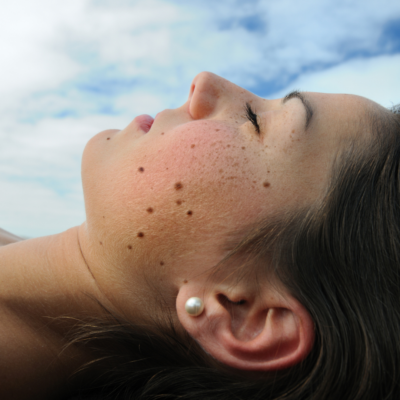
Dark Spots and Sun Damage
Dark spots, also called liver spots or sun spots, are a very common skin condition treated by California Skin Institute practitioners on a near daily basis. Although dark spots can be caused by a variety of issues (including hormonal changes), they are often the result of photo-damage caused by inadequate sun protection. In some cases, such hyperpigmentation can also be a warning sign of a more serious problem, such as skin cancer. If you have noticed the appearance of dark spots on the skin, we encourage you to make an appointment with one of our expert practitioners, to rule out skin cancer and to find the best course of treatment to target the hyperpigmentation. To schedule a skin check consultation, please contact a California Skin Institute practice near you, or request your appointment online.
What are Dark Spots (Hyperpigmentation)?
Hyperpigmentation is a broad term used to describe a variety of brown, red and dark spots that develop on the skin. There are several reasons why this issue can develop, with one of the common factors being exposure to UV light present in sun rays.
Although red and brown spots can be a frustrating cosmetic issue for many patients, they are a natural byproduct of the body’s defense against UV light. This light is dangerous for our skin and plays a significant role in the development of skin cancer.
To mitigate the damage, our skin responds by producing more melanin pigment, which neutralizes much of the radiation. With continuous sun exposure however, the pigment-producing cells can begin to cluster in one area, which appear as red, brown, or gray spots.
These spots can vary significantly in size, with some patients presenting with just one large legion, while others may have many small dark spots on the face, neck, hands, and chest.
Dark Spot Treatment Options
When patients visit California Skin Institute to treat sun-induced hyperpigmentation, one of the first things our practitioners do is assess the extent of the skin damage to ensure they are not cancerous. If the exam shows that the spots are not cancerous, there are several treatment options that may be suggested, depending on your unique situation.
- Chemical Peels: One way to address dark spots on the skin is to gradually target the damaged cell layers through chemical peels. This procedure is highly customizable to the patient’s unique health needs and time requirements. For example, a patient who has extensive damage and is able to take time off work may opt for an aggressive TCA peel. For more gradual outcome, a light glycolic acid peel may be a more effective solution, gradually providing improvement over multiple sessions.
- Microdermabrasion: Another way to target the damaged cells is through physical exfoliation. California Skin Institute practitioners may suggest microdermabrasion with DermaSweep™, a technology that uses micro bristles to scrub off damaged skin cells.
- Laser Treatments: Some patients who are struggling with dark spots on the skin may benefit from laser treatments like excel® V or Fraxel® Dual. These are advanced lasers that can significantly reduce the appearance of the discoloration with minimal downtime.
- Intense Pulsed Light (IPL): California Skin Institute providers can use Intense Pulsed Light therapy to target hyperpigmentation by filtering specific wavelengths of light. One of the benefits of IPL treatments is that the device can deliver several light wavelengths at once, thus allowing your provider to target multiple issues, such as hyperpigmentation and collagen damage.
Your Consultation
The best way to find the right dark spot treatment in your situation is to schedule a consultation with one of our expert practitioners. Get in touch with us by calling a California Skin Institute practice near you, or drop us a note through our online appointment request form.



 / 291 Reviews
/ 291 Reviews